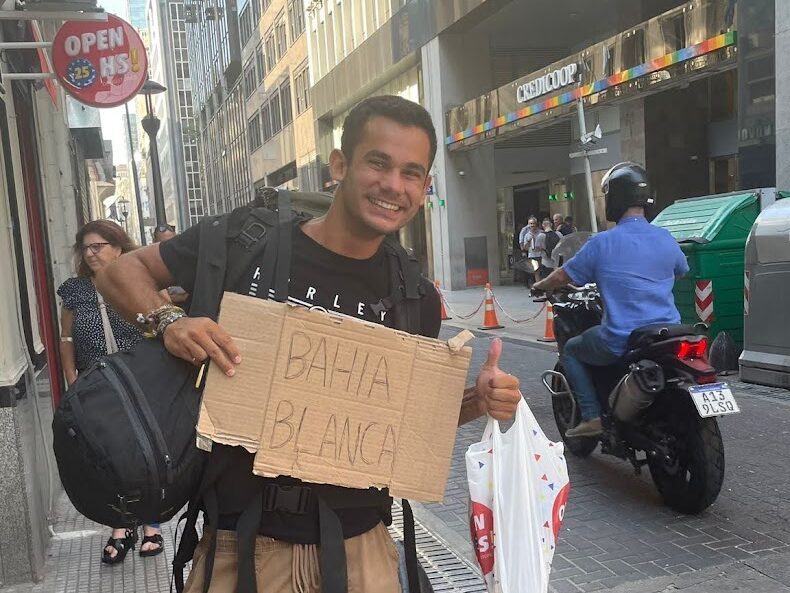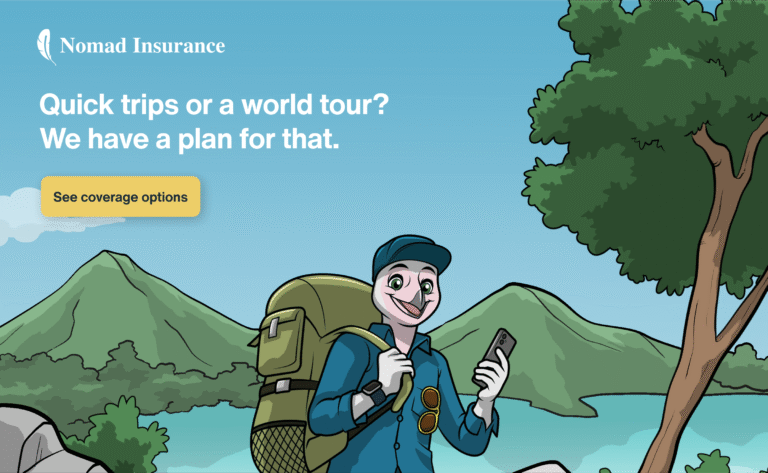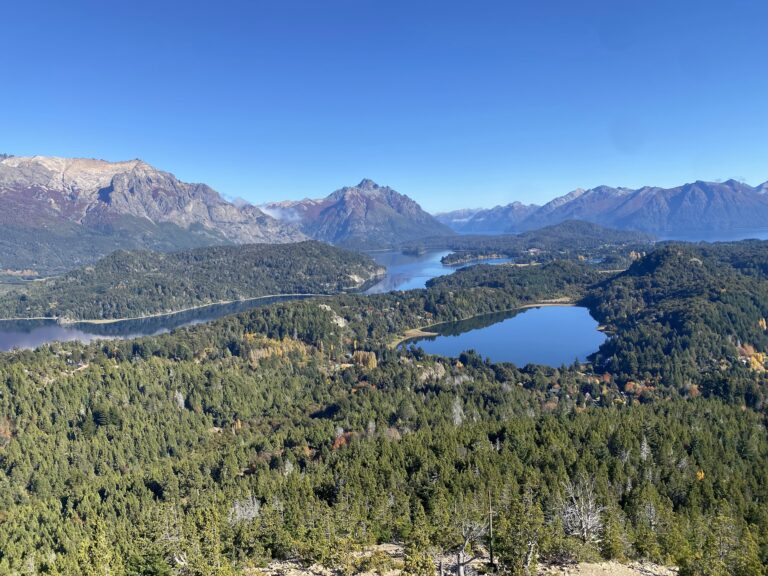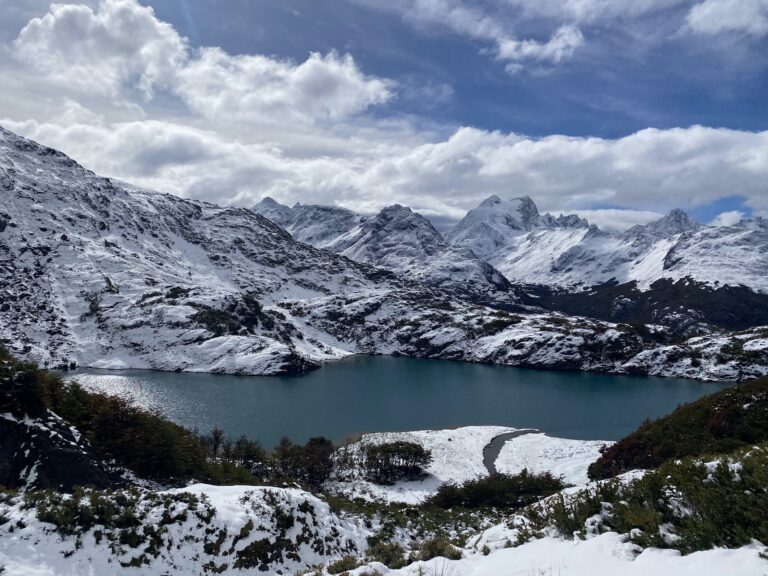What I Learned Hitchhiking to the Edge of Patagonia
What if you could travel 3,500 kilometers through Argentina without paying a cent for transport? Hitchhiking from Buenos Aires all the way down to Ushuaia, the southernmost city in the world, wasn’t just a test of patience and luck; it was one of the most memorable travel experiences I’ve ever had. From truck stops in the middle of nowhere to generous locals and surprise police searches, here’s everything I learned from my week on the road. If you’re heading this way, make sure to read about the best hikes to do in Ushuaia.
Why Hitchhike This Route?
Flights in Argentina are surprisingly affordable, so if you’re only thinking about money, this might not be the smartest move. I still had to pay for one week of food and accommodation. But travel isn’t just about efficiency. Hitchhiking lets me meet locals, hear stories, and see a side of Argentina I would have missed behind a plane window. Ruta 3 became my path south, and each day added a layer of unpredictability that no bus ticket could offer.
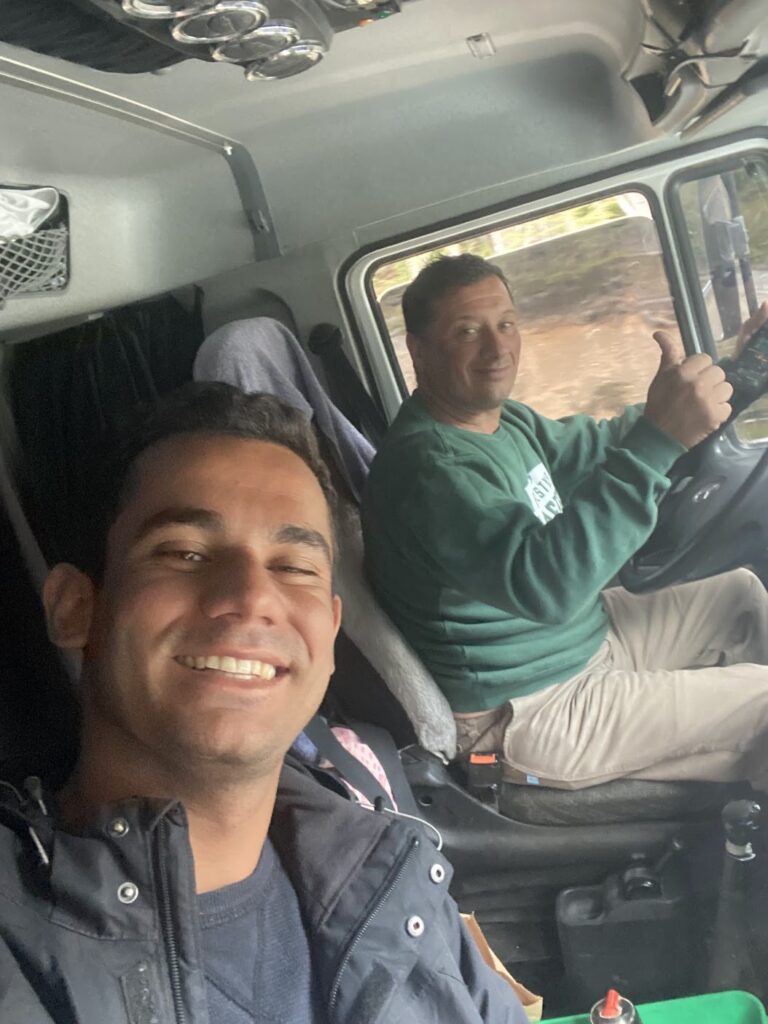
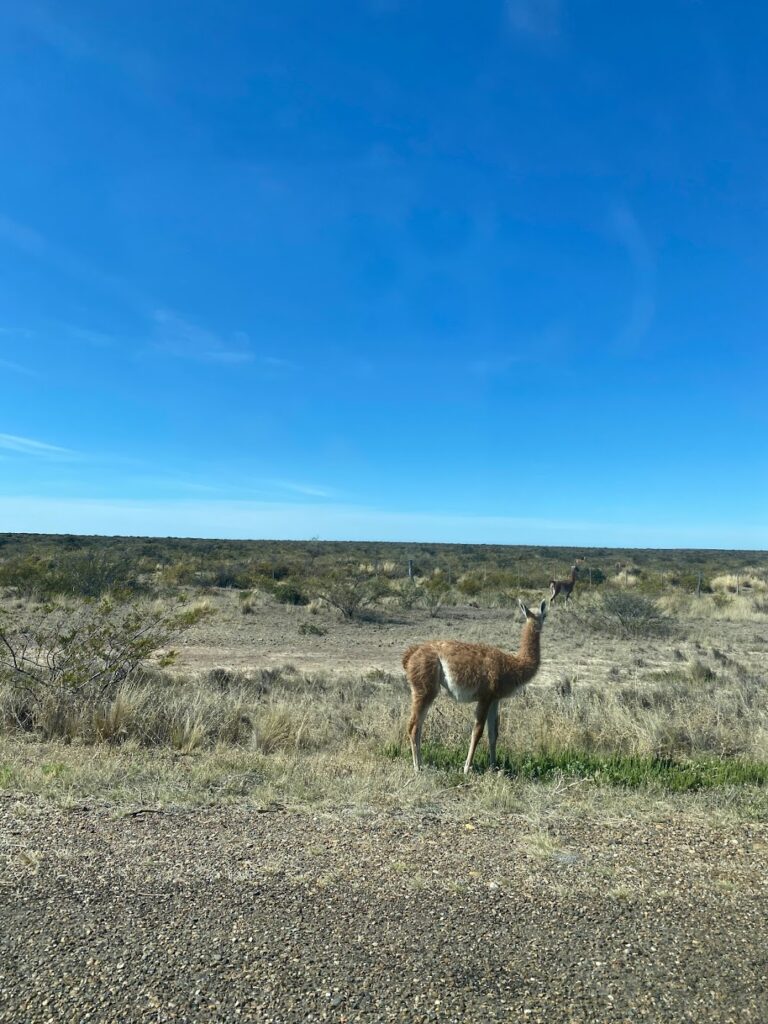
How Safe Is It?
Hitchhiking always comes with risks, but Argentina is generally safe. That said, you still need to use your instincts. Never tell a driver your destination until they share theirs, and feel free to decline a ride that doesn’t feel right. Big cities like Buenos Aires are harder to hitch from and carry more risk, but things become easier and safer the further south you go.
The Logistics of the Journey
- Distance: 3,469 km
- Rides: 26
- Days hitchhiking: 6
- Total wait time: 13.5 hours
I used local buses and Ubers to get out of major cities, and always planned where I could walk to if I got stuck. My accommodation was hostels, apartments, and even a family home I found on iOverlander. I didn’t have a tent yet, though I highly recommend one. This required just a bit of planning and a lot of flexibility.
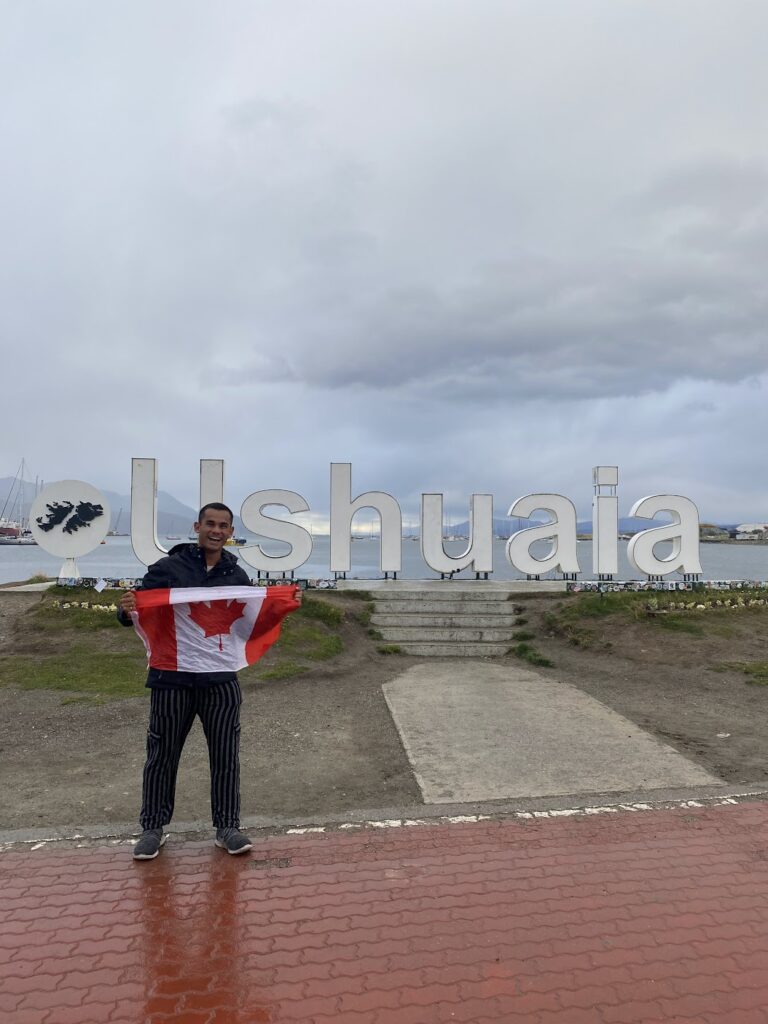
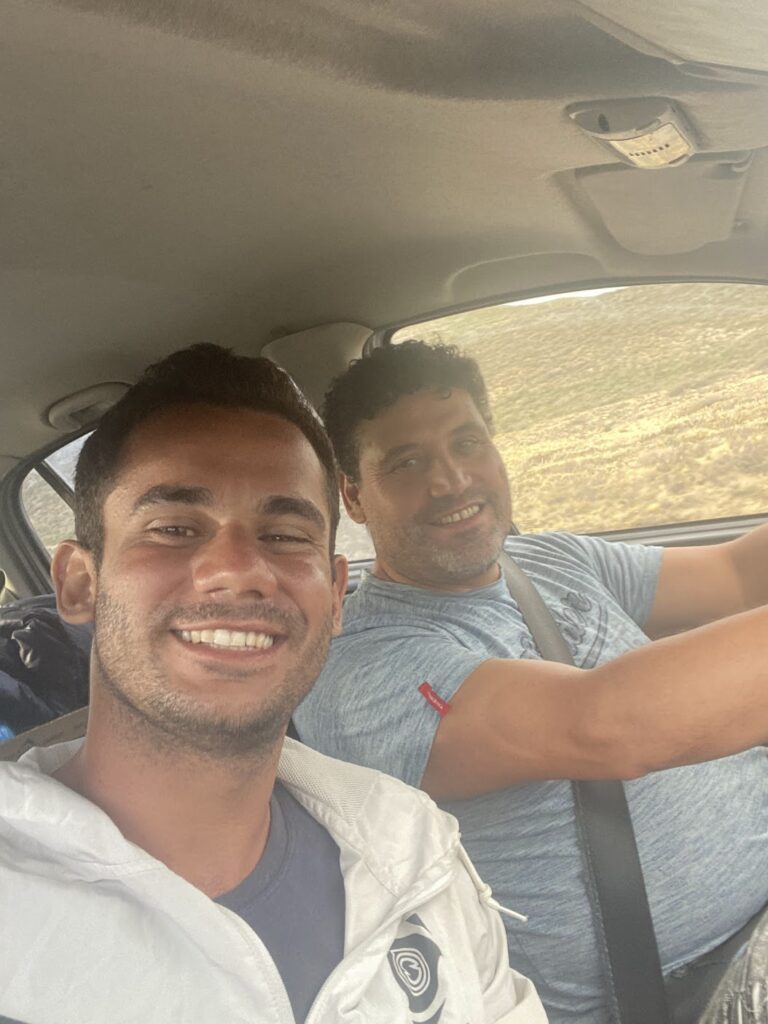
10 Hitchhiking Survival Tips
- Download offline maps (Google Maps or MAPS.me) and get the iOverlander app; it will be your best friend.
- Learn some Spanish. Stories and conversations are your form of payment.
- Signs aren’t essential unless you’re in a city, though this varies from country to country. I only used one to get out of Buenos Aires.
- Any ride helps. Even 20km gets you closer and opens new ride opportunities. If you move 20kms up the road, that same driver would still pick you up, AND you get the opportunity of new drivers that pass by to pick you up as well.
- Pick smart spots. Roundabouts, toll booths, and slowdowns are key.
- Get connected! I recommend an eSIM from Saily.
- Have a backup plan. Know where you’ll sleep if no one picks you up.
- Be self-sufficient. Bring snacks, and use the bathroom when you can. Try not to be a bother to the driver and not have to ask them to stop.
- Portable charger. Essential. It’s hard enough to get places with a phone, but without one, it’s that much harder.
- Earlier is better! The darker it gets, the less the chances of getting a ride, and also it becomes less safe for you. Get out there early in the morning and maximize your chance of getting to your destination.
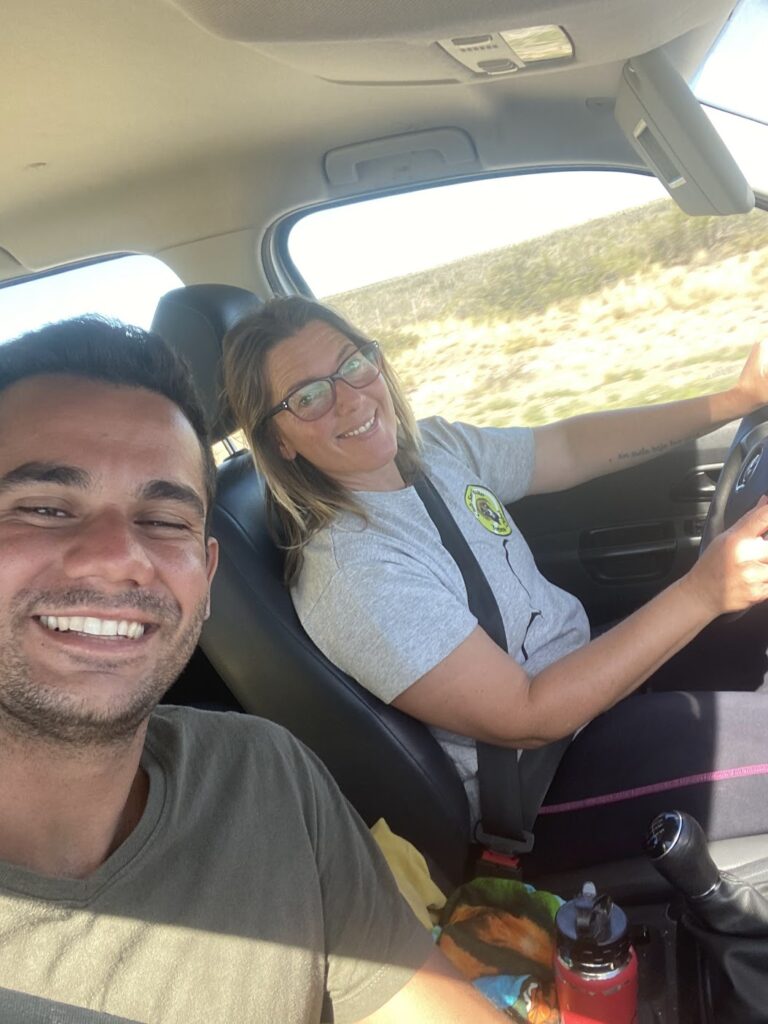
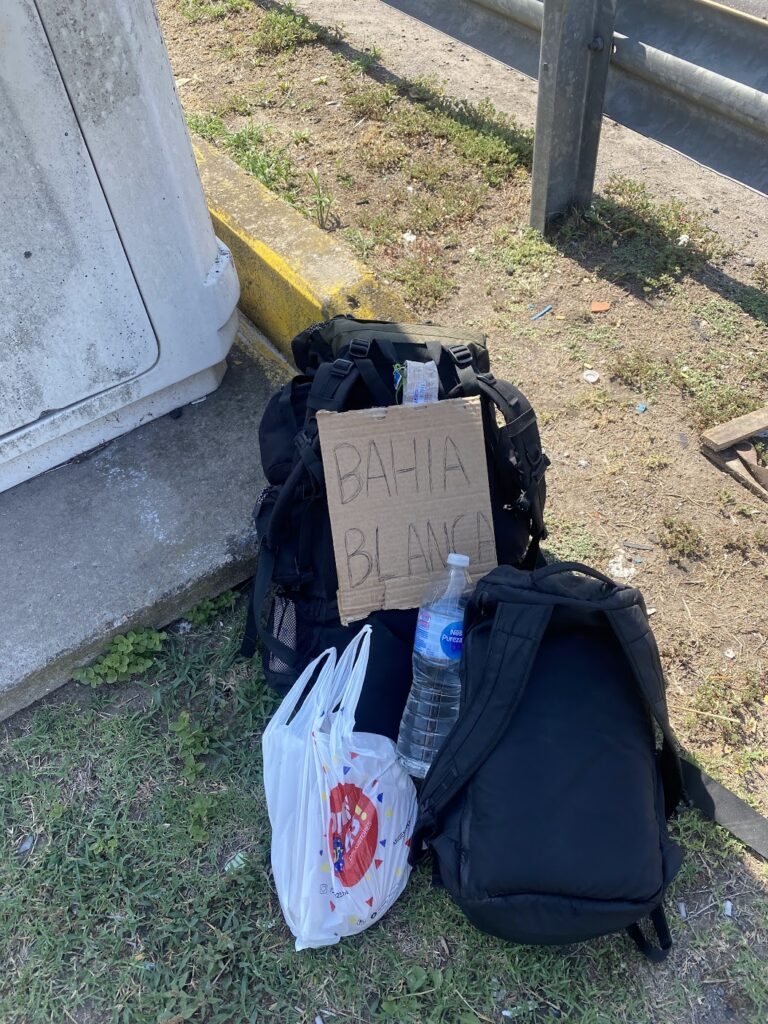
The Route, Day by Day
Day 1: Buenos Aires to Bahia Blanca (689 km, 5 rides, 2h wait time)
I left the center of Buenos Aires in an Uber with my friends as they were going to the Ezeiza International Airport. This might be cheating, but hitchhiking from the center of any city is just about impossible. I usually allowed myself some transport at least to the end of any big city. I took bus 8A, which cost about 100 pesos at the time ($0.20), to the Parada de colectivos. Here, I went to the on-ramp and waited about 30 minutes to get my first ride. He only took me a few kms and dropped me off at a big highway interchange. Any kms are good kms!
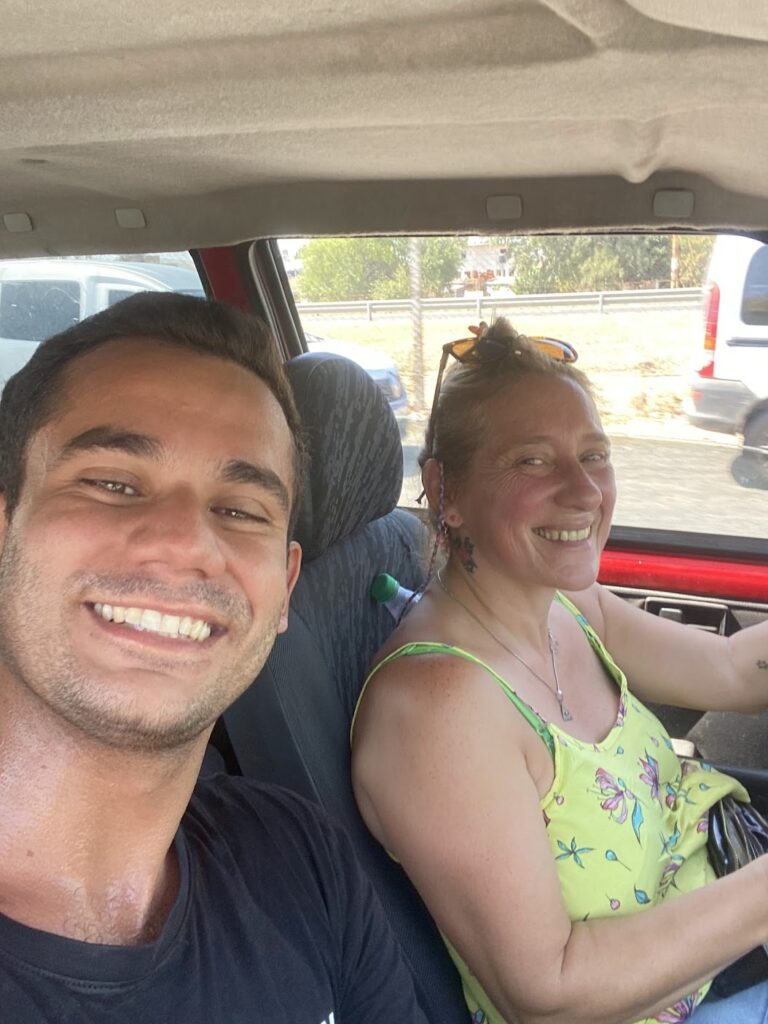
I walked across and ended up on a side road, where a nice lady gave me a ride. She took me to the Toll Tristán Suárez (always a good place for hitching), where I quickly got a ride in a truck. This ride finally took me a couple of hours, and I made it just outside of San Miguel del Monte at a roundabout. I quickly got another truck to take me some more hours.
I was in a town named Azul, where I waited about an hour and a half. When it was getting close to 6 pm, this couple picked me up and drove me the last 4 hours to Bahía Blanca. I headed straight to an all-you-can-eat buffet, charged my phone as it had died, and headed to my accommodation.
Day 2: Bahia Blanca to Puerto Madryn (670 km, 5 rides, 2.5h wait time)
In the morning, I took a taxi to the edge of town, as the bus didn’t go that far. Before I even stuck my thumb out, a firefighter stopped and offered a ride a couple of towns over. From there, I got 2 more rides, just hopping from town to town. Eventually, I got one that lasted over an hour and entered Patagonia. I stopped here for lunch and had to wait quite a while. A couple picked me up, but they dropped me off in the middle of nowhere in the town of General Conesa.
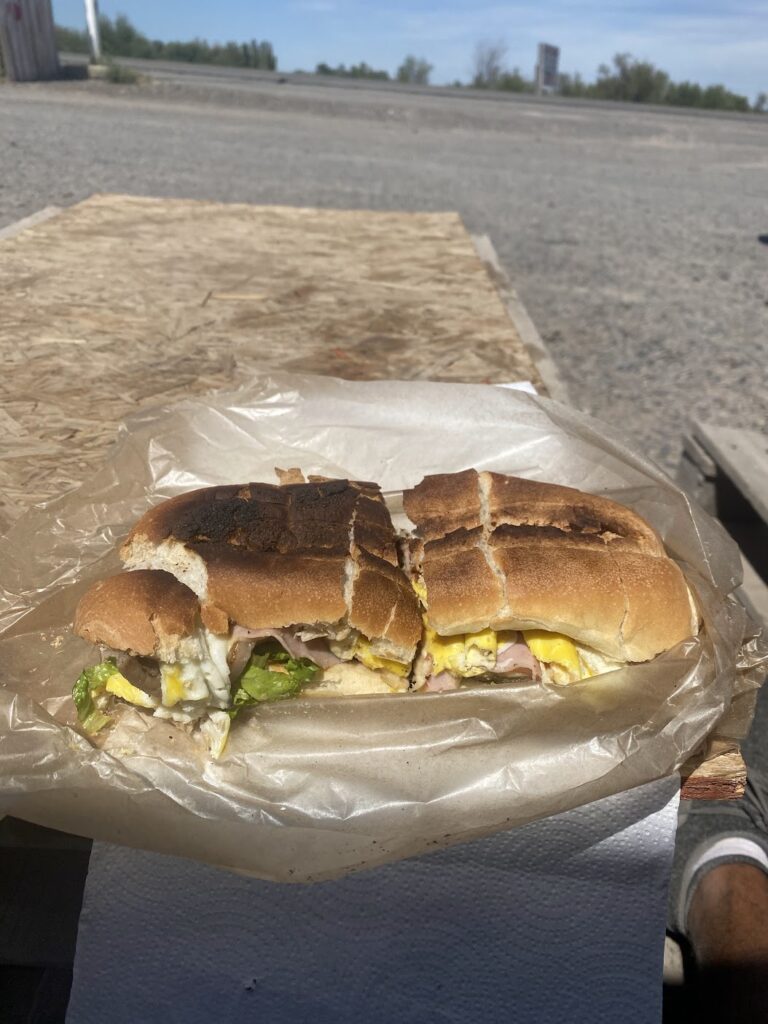
Again, it was starting to get near 6 pm. I had a few hundred kms to go, but I got super lucky and got picked up in a cool truck going all the way to Puerto Madryn. We had a lot of fun, until the police stopped us. They searched my bag, questioned me about my passport, and asked why my Spanish was good. They were mad because of an “illegal radio” the guy had in his brand-new truck. Eventually, we got let go and made it to Puerto Madryn by night.
Day 3: Puerto Madryn to Comodoro Rivadavia (450 km, 3 rides, 4h wait time)
The next couple of days I spent in Puerto Madryn, but that’s a story for another time. The third day of hitching, I walked to a roundabout and got an easy ride to the next town of Trelew. Here, I waited for an hour and a half at the entrance of the city until I finally got a ride that took me to the other end of town. I had to wait another 2.5 hours before finally getting a ride, which luckily took me all the way to Comodoro Rivadavia. When I arrived there, I took a city bus to Rada Tilly and made it to my hostel (Roots Backpackers, strongly recommend!) right by sunset.
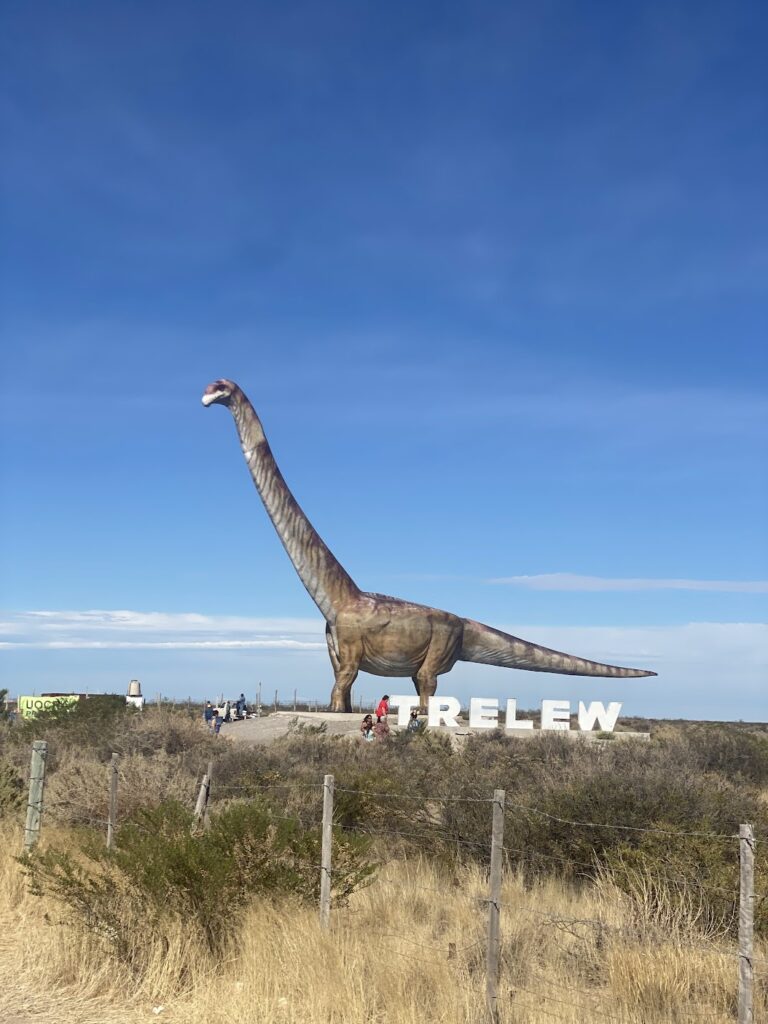
Day 4: Comodoro to Rio Gallegos (770 km, 1 ride, no wait time)
My original goal was to get to Puerto San Julián, and the next day to Rio Gallegos, but I lucked out and met a couple at the hostel that was heading straight to Rio Gallegos. I happily accepted the ride. We drove so much this day, but it was in a comfortable car and was super easy. We stopped to see some armadillos, and finally, the road started getting some landscapes. They dropped me off in Rio Gallegos in the evening.
Here is where iOverlander came in to rescue me. I couldn’t find anything for a reasonable price on Booking.com, but there were 3 places on iOverlander, the second of which I was able to stay at Hostel Elcira – Backpackers, for cheap.
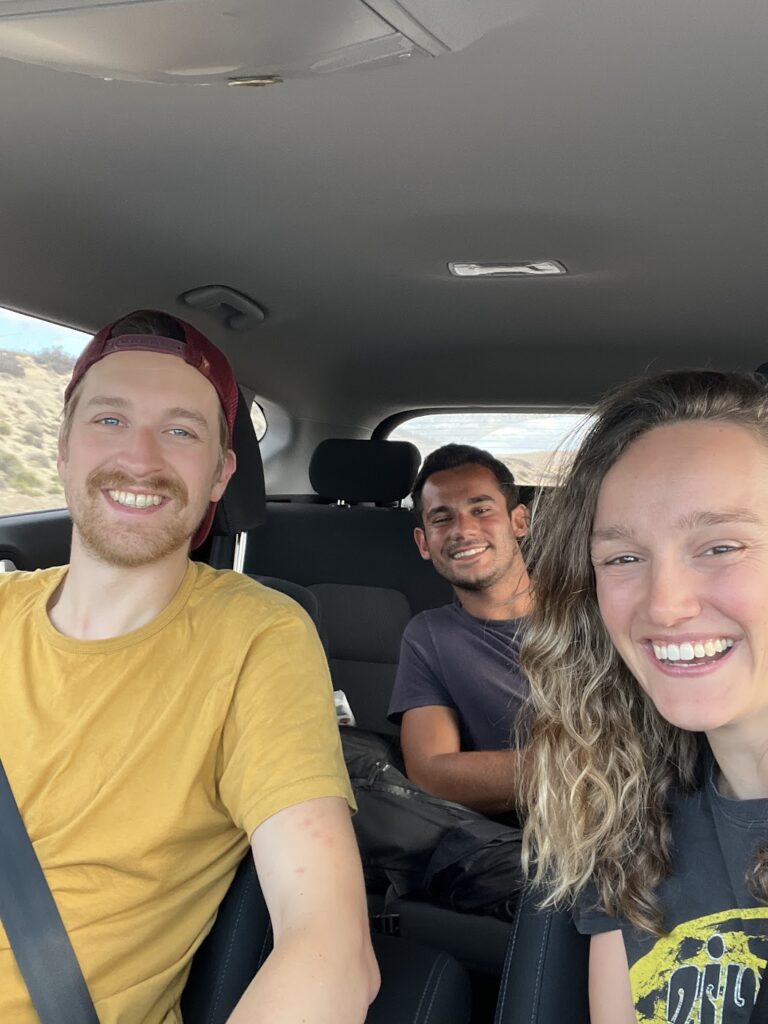
Day 5: Rio Gallegos to Rio Grande (375 km, 3 rides, 4h wait time)
I left really early in the morning (6 am) from the house as I had a lot of kms to cover to get to Ushuaia, although the lady said people tend to leave even earlier. I walked a couple of kms and got to the edge of town where I had to wait over 2 hours before, and an old man picked me up and drove me a few kms further out of town.
Here, I passed the Police Checkpoint and went to wait at the train tracks, where there was already a hitchhiker. Following hitchhiker etiquette, I sat a bit behind him as he should get the first ride. He got picked up 15 minutes later, and I had to wait another hour and a half before a truck finally stopped. At this time, a girl also came and lined up behind me.
The truck drove me into Chile, then back into Argentina, picking me back up after each of the border crossings. He did tell me that sometimes they aren’t allowed to pick up hitchhikers after crossing the border, but we had no issues. I got to Rio Grande around 5 pm, and although I could have pushed to get to Ushuaia, I decided to just stay at a Hostel Argentino there and do the last couple of hundred kms the next day.
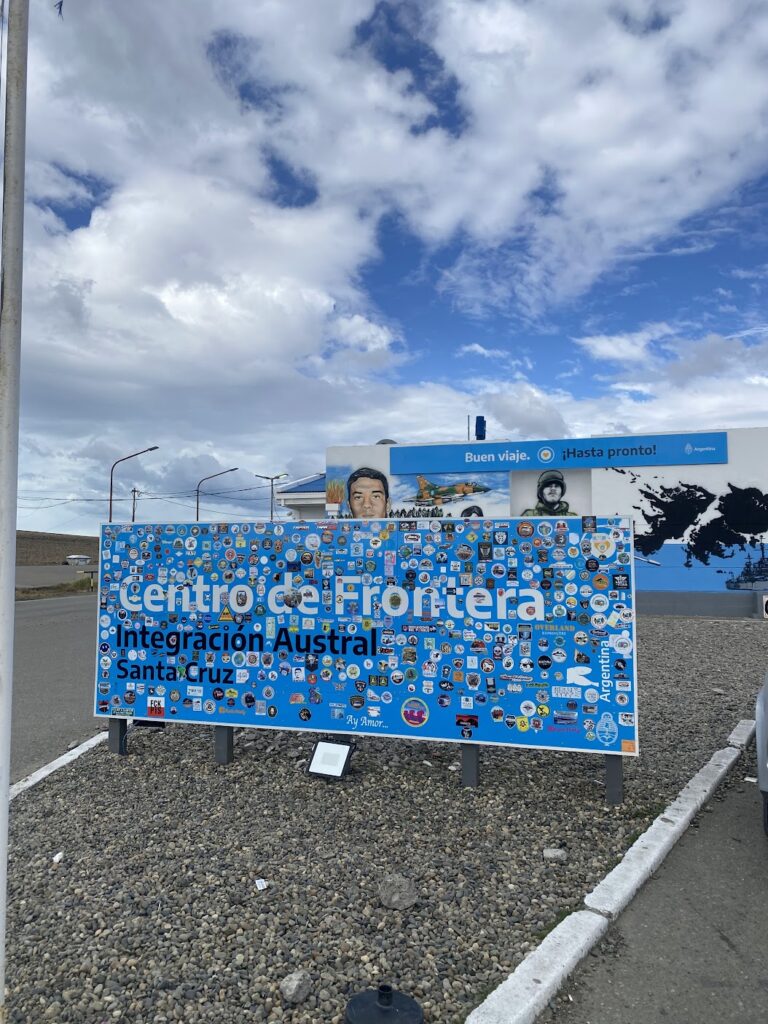
Day 6: Rio Grande to Ushuaia (210 km, 2 rides, 30 min wait time)
I took a taxi over to the gas station by the highway and waited in the cold for a bit before a truck picked me up to go to Ushuaia. He had just left the gas station, so I figured it would be an easy 2-hour drive there. I was very wrong. For one, this truck was going 40km/h through the mountains, and on top of that, the driver needed a one-hour break in the one town in between, so it ended up taking closer to 4 hours.
So this was a lesson that the first ride may not always be the best, and maybe I could have waited another hour and gotten a better ride, but there’s always a risk in getting no ride at all. To top it off, when we arrived, he dropped me off 8 kms from the city center, so I started walking, but luckily someone picked me up and took me to the center. But that’s just how it goes when hitchhiking, you never know what you’re gonna get. In the end, I still made it!
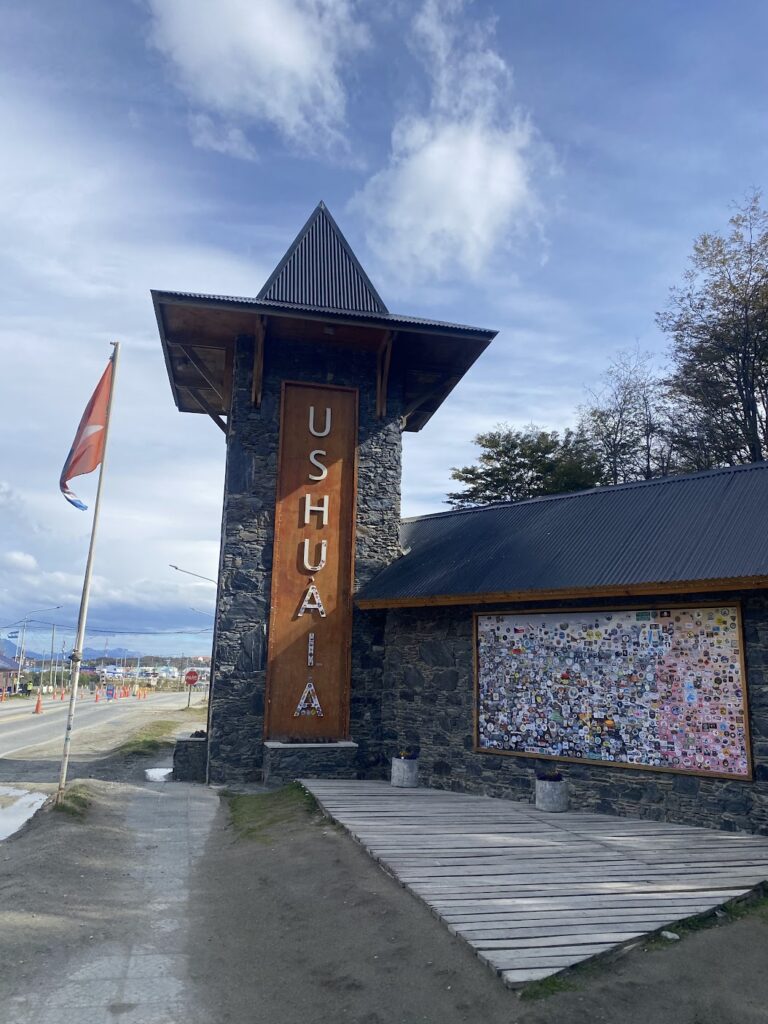
Final Thoughts
This journey wasn’t about saving money—it was about meeting people, building trust, and experiencing the road. It’s not something I’d recommend to everyone, especially if you don’t speak Spanish or aren’t comfortable going off-plan. But if you’re up for it, hitchhiking through Patagonia might just be the most rewarding way to see Argentina.

